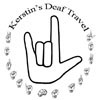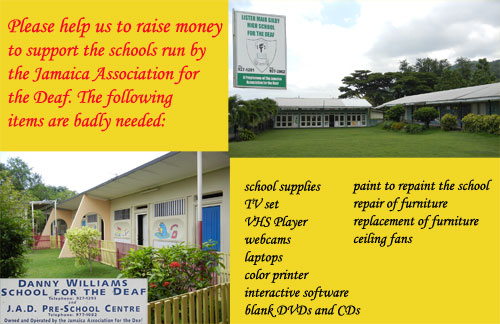|
Deaf South America Cruise
March 16-30, 2014
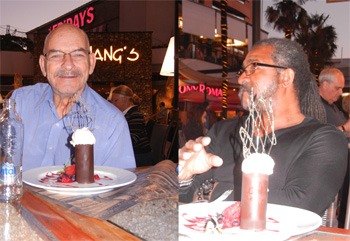
Enjoying a night out in Santiago, Chile
|
Some group members flew into Santiago, Chile a few days prior to the cruise. Santiago
is Chile's official capital, but the National Congress of Chile meets in Valparaiso.
|

|
Our trip to Vietnam, Cambodia and Thailand was a very exciting adventure
with many highlights. After a long flight from the US, we arrived in Hanoi in the
northern part of Vietnam.
|

|

|

|
The next day, we went on a shore excursion in La Serena, capital of the Coquimbo Region.
La Serena is the country's second oldest city after Santiago and today one of the fastest growing areas of Chile.
La Serena was first founded on the orders of Spanish Pedro de Valdivia and is today the home to the Roman Catholic
Archdiocese of La Serena. The city experienced an almost total destruction from an earthquake in 1730. Recently,
tourism has become one of the most important economic activities so that the population doubles in the summer months.
During our tour, we stopped at the light house, the Recova Handicraft Market and the Archaeological Museum.
|
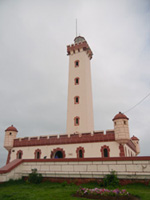
Light House in La Serena, Chile
|
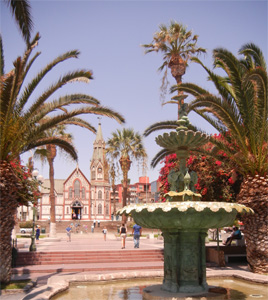
Arica with San Marcos
Cathedral,
built by Gustave Eiffel
|
Still sailing in the waters of Chile, we arrived in Arica. Arica is Chile's northernmost city, situated only
11 miles south of Peru and it is located at the edge of the Atacama Desert. Two valleys, Azapa and Lluta reach from the city
into the dessert. Both valleys are very fertile thanks to rivers that supply the needed water to grow a large variety of fruits.
Archaeological findings show that Arica was inhabited by native groups 10,000 years ago. The first stop of our tour was a place
from where we could see the famous Lluta Geoglyphs, witnesses of an early population in this area. The next stop was in the 17th
century town of Poconchile in the Lluta Valley. Then, we reached the Chilean Altiplano where we saw a Pachamama (Mother Earth)
ceremony. After descending into the Azapa Valley, we visited the Azapa Archaeological Museum displaying some of the oldest mummies
in the world. Before returning to the pier, there was an opportunity for shopping at a local handicraft market and to visit the
inside of the San Marcos Cathedral, built by Gustave Eiffel. |
A day at sea allowed us to participate in many onboard activities like morning workout at the gym,
trivia, poolside activities, Zumba, health lectures, painting classes, and much more.
|
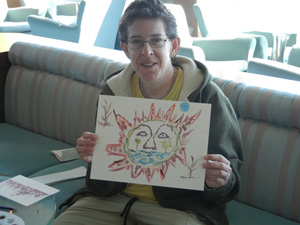
Some of us participated in several painting classes
|
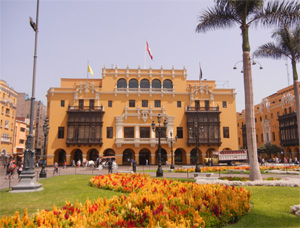
City Center of Peru's capital, Lima
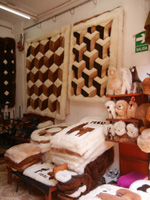
Indian Market in the Miraflores District
|
Lima is the capital and the largest city of Peru and located in the valleys of three rivers.
The city was founded by Spanish conquistador Francisco Pizarro in 1535. Today, it is home for around one-third of the
Peruvian population. Our first stop during the city bus tour was at the Plaza Mayor in the heart of Lima. The historic
center is a UNESCO World Heritage site known for its Colonial era buildings featuring hand-crafted wooden balconies.
The impressive Cathedral of Lima is the final resting place of Francisco Pizarro. The Archbishop's Palace, City Hall
and the Presidential Palace are also surrounding the Plaza Mayor. Back on the bus, we drove through the San Isidro
district, one of Lima's oldest residential neighborhoods. Arriving in the Miraflores District, we had time for some
shopping at the Indian Market, where Peruvian handicrafts could be found. Colorful weaving, paintings, jewelry, pottery,
and wood carvings influenced by the Indian culture are nice souvenirs to be brought home. |
Manta is the fifth most populous city in Ecuador and has the country’s largest seaport. The city history
traces back to the Pre-Columbian times. Manta has been an important trading post for many centuries. Its main economic activity
today is tuna fishing. Tourism and the chemical industry are also important resources of income. Our bus tour took us to a Tagua
nut factory. The nut is also known as vegetable ivory. A number of different eco-friendly end products are produced from this nut
like jewelry, decorative art pieces and shirt buttons. Here we had the opportunity to see the entire production process from
the drying of the nut cluster to the final product. The next stop was at a sisal weaving factory where 200 bags per week are
produced. The bags are used to export coffee and cacao beans. Everything is handmade starting with the extraction of the fiber
from the plant, to the production of the thread that than is used in the loom to weave the material for the sacs. Manta and
its surrounding area are famous for the fine Panama Hats. The material for the Panama Hat is provided by the Carludovica palmata
plant. We followed the Panama hat-making process that started with the extraction of the fiber from the leaves of the plant. Then,
the fiber is cooked to soften the material. After drying the material, the hats are woven row by row. A person will work on a very
high quality had for up to three months. |
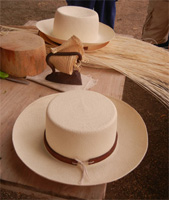
Fine Panama Hats
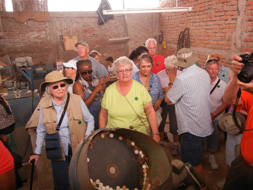
At the Tagua nut factory, Manta
|
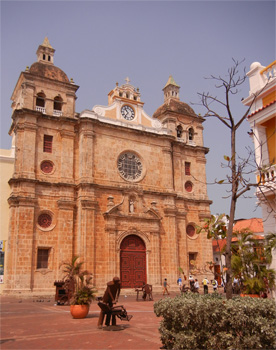
Cartagena, Colombia
|
Cartagena, Colombia was founded in 1533. It was named after the port of
Cartagena in Spain. We started our city tour in Cartagena with the visit of the fort Castillo de San Felipe de Barajas
that was built in the 17th century. The fort has a tunnel system that facilitated supply and evacuation of the fortress.
It is the largest work of Spanish Military engineering in South America. Our next stop was Las Bovedas, the former dungeons.
Today, it is a nice place for Shopping for handicrafts and works of art made by local artisans. We enjoyed the stroll through
the old town that is a UNESCO World Heritage site. The well-tended Spanish Colonial buildings reflect the importance of the
town in the past as a main hub of commerce and transportation of the area. After walking through the narrow cobblestone
streets and passing the city squares, we arrived at the San Pedro Claver Church. It was built in the 17th century. Saint Peter
Claver is the patron saint of slaves.
|

|
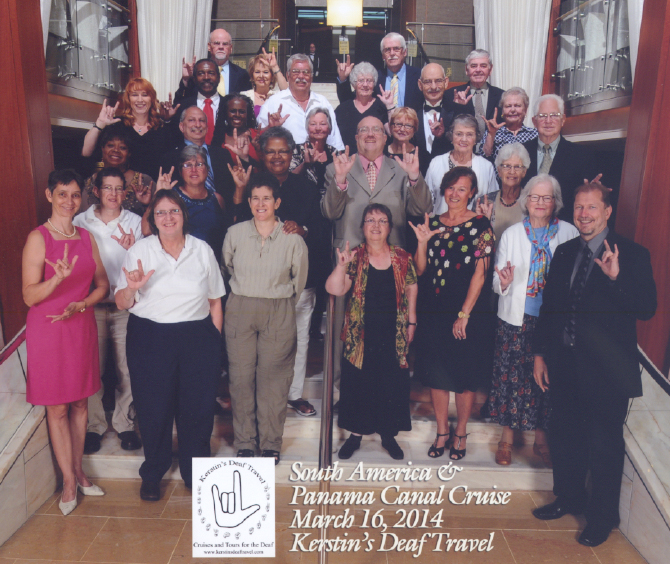
Group Picture
|
What our clients said after the tour:
|
Hi Kerstin
All is well with us and we miss you all already!! You were doing an awesome job with
everything and made our trip worthwhile!! We couldn't ask for a better agency!! You're
the best!! Yes we heard about the earthquake in chile and panama..you sure picked a
perfect timing! Will definitely spread out words about ur agency and look forward
to the next trip!! Much hugs from us all!! Jo
|
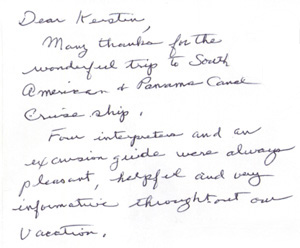
Thank you note
|
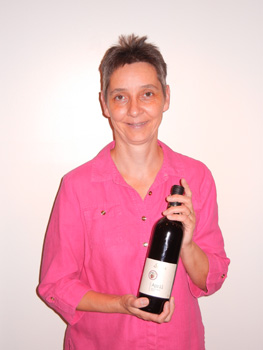
A special Thank You from Debbie and Deb,
Joanna and Rita
|
| We would like to thank the following people for their donation: |
- Guy & Chong Barganier
- Martha Saunders
- Ella Elkins
- Eric & Isabel Lammerth
- Joanna Karp
- Deborah Cannady
- Deborah Karp
- Kymme Van Cleef
- Michael & Nancy Worstell
- Timothy & Cindy Martin
- Sherwood & Mary Sue Boxer
- Michael & Lucille Steffy
|
Contact Kerstin's Deaf Travel to book your next cruise by sending an e-mail to kerstin@kerstinstravel.com
|
